In mid-July I covered a national sports competition in Minnesota for Disabled Sports USA as part of the volunteer work I do for them. There’s a lot that goes into shooting a big multi-sport event like this, so here’s a break-down of how I did it.
Everything starts with the event schedule. Since I can only be in one place at a time, I ask them to tell me what their priorities are. In this case they had a number of sponsored athletes training for the Paralympics, so those athletes and their sports were at the top of my list. In addition to that, they also could use anything showing participants having fun, working with coaches, good sportsmanship and general event photos.
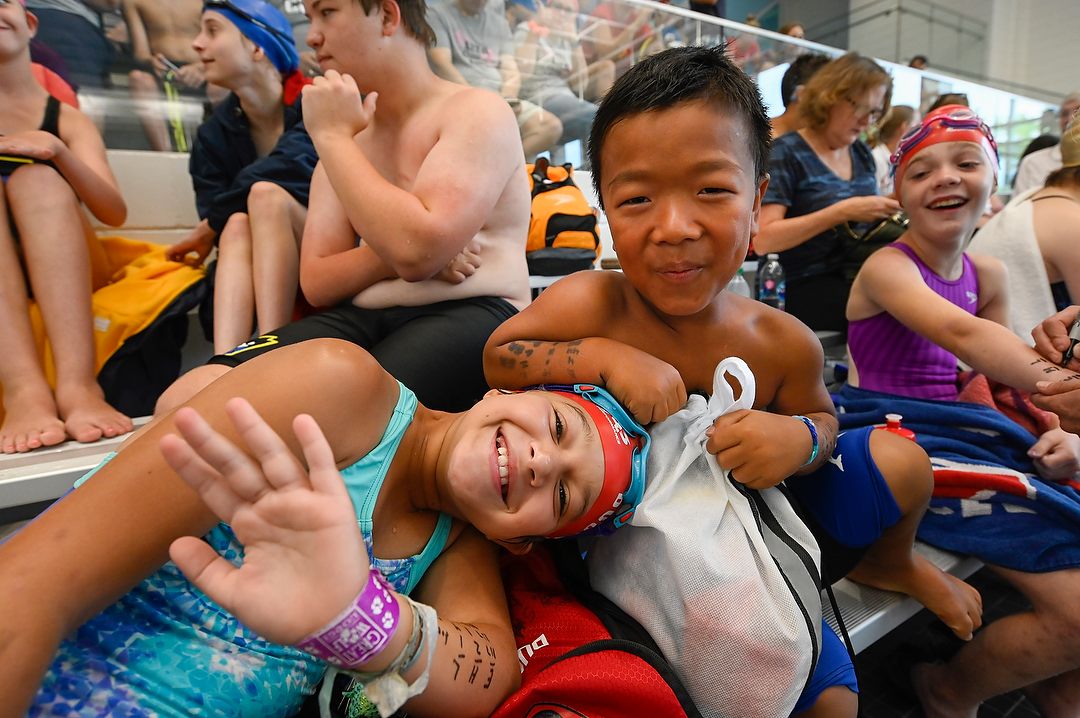
It’s not just about action, but also about what the athletes are doing when not competing, even clowning around. Nikon Z 6, Aperture Priority, Auto white balance, ISO 2500, 1/400 at f/4.5 in Matrix metering, -0.3 EV, Nikkor AF Zoom 18-35mm f/3.5-4.5G lens at 19mm.
Knowing their needs, and the sports involved helped me plan what gear to bring. Several of the events were indoors, so I knew that fast aperture telephoto lenses would be key. With the outdoor sports, I’d need plenty of reach (long telephoto) for those venues where I couldn’t get close (shot put, discus and javelin in particular). For cameras, the most important features would be fast autofocus, high frame rate and good low light capability. So here’s the kit I took to Minneapolis:
- Nikon Z 6 and D500 bodies with extra cards and batteries.
- Nikkor 300mm f/2.8 lens (with the teleconverters, I’d also use it as a 420mm f/4 and 600mm f/5.6 lens)
- Nikkor TC-14EIII and TC-20EIII (1.4X and 2X teleconverters, for the 300mm)
- Nikkor 70-200mm f/2.8 lens.
- Nikkor 105mm f/1.4 lens.
- Nikkor 50mm f/1.8 lens
- Nikkor 18-35mm f/3.5-4.5 lens.
- Slik carbon fiber monopod.
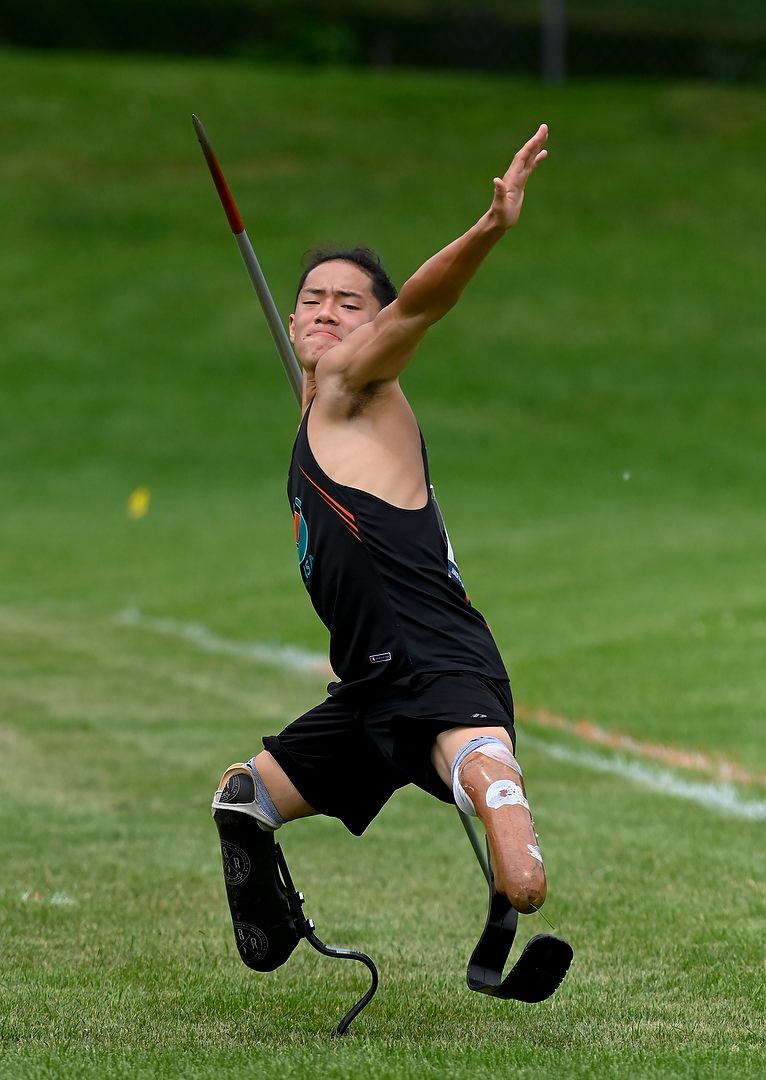
Javelin throw is not something you want to be in front of. That is, unless you have enough lens to be in a safe area. That’s the main reason I brought along the Nikon TC-20EIII teleconverter, to turn my 300mm f/2.8 lens into a 600mm f/5.6. Nikon Z 6, Aperture Priority, Sunny white balance, ISO 1000, 1/2500 at f/7.1 in Matrix metering, -0.7 EV, Nikkor VR 300mm f/2.8G IF-ED lens with 2X teleconverter for 600mm.
I flew in late on a Sunday night, and the first event was Monday morning, starting at 8am. Which meant I needed to be there around 7. As a photographer, being early rarely causes problems, being late almost always does. Getting there early let me:
- Talk to the officials, so they know why I’m there, what I’m trying to do, and where I can and can’t be.
- Get photos of coaches working with their swimmers.
- Make photos during warm-ups from spots I couldn’t be during the actual competition.
- Explore the venue to decide on the best places to shoot from.
That “exploring” is very important, as I approach sports photography the same as other types of photography, thinking about subject, light and background. My subject, in this case is easy, the athlete. But where is the light good and bad, and how can I work with that? And what will my background be, does it help or hurt the photo and can I move to change it? These last two guide me in where I’m going to shoot from and with what lens(es). I’ll explain that by explaining how I photographed the swim events.

Here’s the swimming venue, whose layout dictated much of what I did there. Nikon Z 6, Aperture Priority, Auto white balance, ISO 3200, 1/1600 at f/4 in Matrix metering, 0.0 EV, Nikkor AF Zoom 18-35mm f/3.5-4.5G lens at 24mm.
Swimming took place at a community center, and one end of the pool had floor-to-ceiling windows. So I immediately knew I’d be taking advantage of that strong light, shooting from the sides. Why not from in front of the windows, with the light directly in the athlete’s faces? That’s where the starting platforms and officials were, so off-limits to me. I also couldn’t shoot from the opposite end, as that would create serious exposure problems looking into the light.
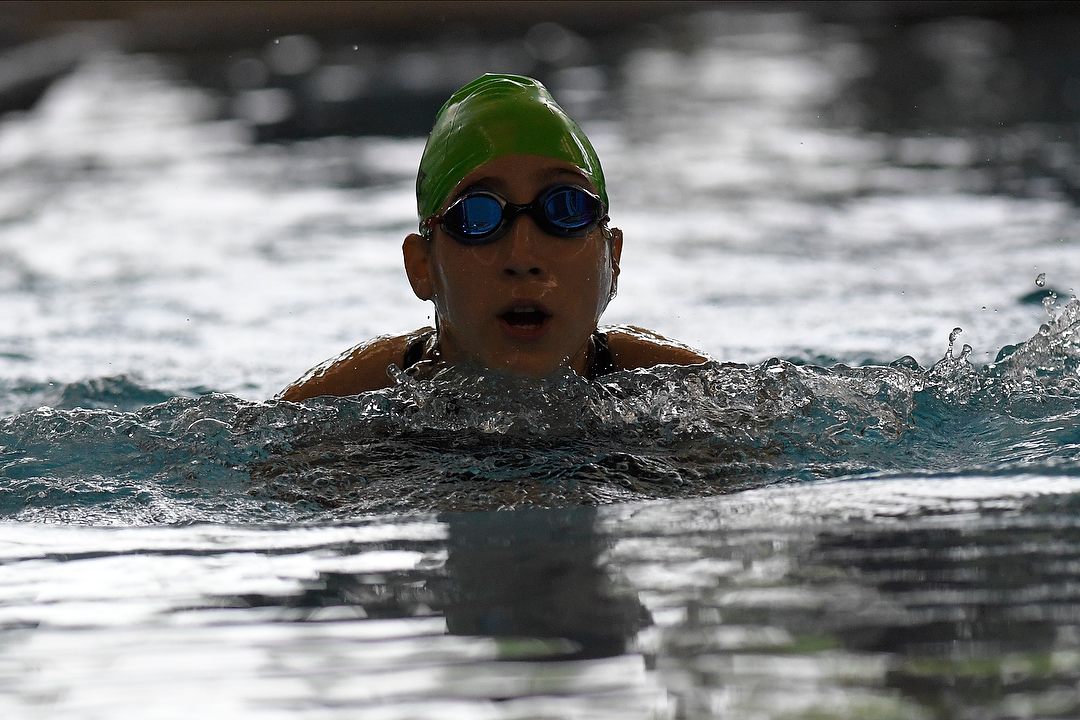
This shows you why I chose not to shoot into the light from the windows. To pull out detail in the swimmers’ faces I’d have to overexpose and blow out the highlights in the water. Nikon D500, Aperture Priority, Auto white balance, ISO 2000, 1/5000 at f/2.8 in Matrix metering, +0.3 EV, Nikkor VR 300mm f/2.8G IF-ED lens.
Of the two sides of the pool, on one was the starter, more officials and spectators. But the other side was mostly clear of people, and that’s where I spent most of my time. However, when swimmers started from the platforms, diving into the water, I’d sometimes shoot from the spectator side to have a cleaner background as the swimmers dove in. And I’d shoot from that side if the athlete I needed was in one of the lanes nearest there.
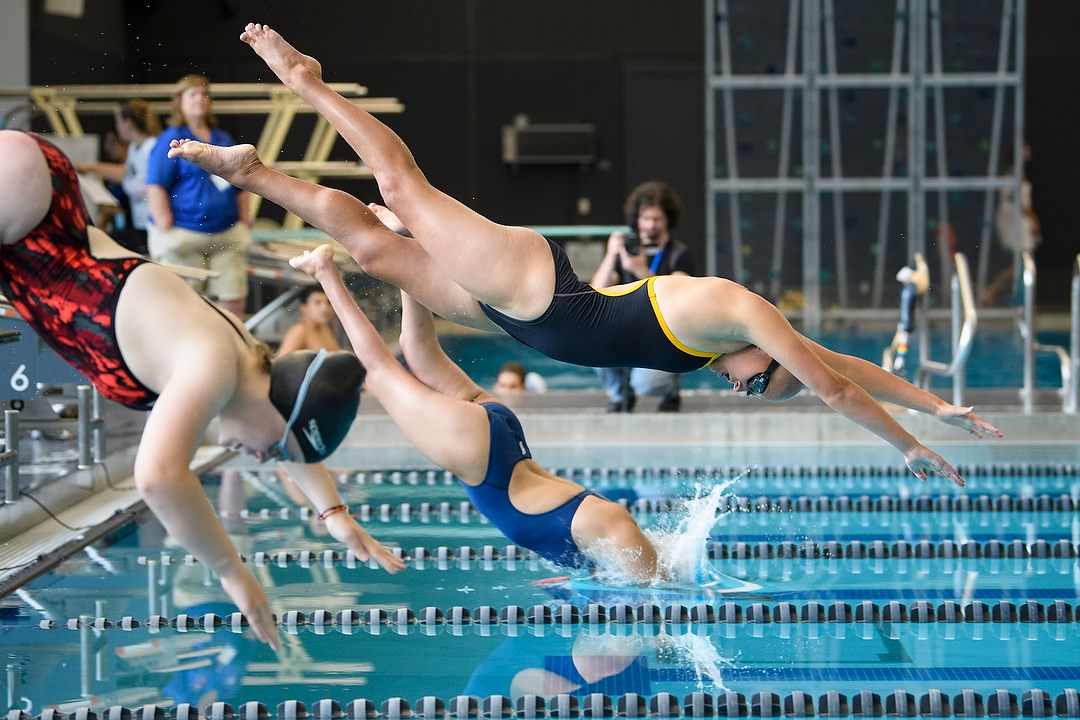
Shooting a start from the spectator side gave me a less cluttered background, except for the stupid photographer over there :). Nikon D500, Aperture Priority, Auto white balance, ISO 2500, 1/800 at f/2.8 in Matrix metering, +0.3 EV, Nikkor VR Zoom 70-200mm f/2.8 lens at 95mm.
My next concern with light was color (white balance). Despite those large windows, there were also lights in the ceiling. While I expected the daylight would mostly overpower them, I chose to use Auto white balance in case the color temperature shifted from one end of the pool to the other.
Shooting from poolside, I’d either stand or kneel. If the swimmer was close to me, I’d kneel to get an angle closer to the water. If they were further away, I’d stand to shoot over the other swimmers. The building also had risers for spectators on the one side, and a sort of balcony behind that. From up there I’d have a nice high angle to shoot down on some of the races.
Fast swimmers tend not to breathe on every stroke, so you need to wait for their face to show before shooting. To help me get that, I set both cameras to their fastest frame rate (10fps for the D500, 12fps for the Z6) and the autofocus to AF-C (Continuous) and Group (for the D-500), or Wide-area (S) (for the Z 6). These are Nikon terms for Focus Area Modes that don’t force you to use a single point but give you a small area the camera will focus on. Using back-button focus, I waited for the swimmer’s face to clear the water, punched the AF button and shot a burst of frames. Most of the time, I had sharp images from the burst.
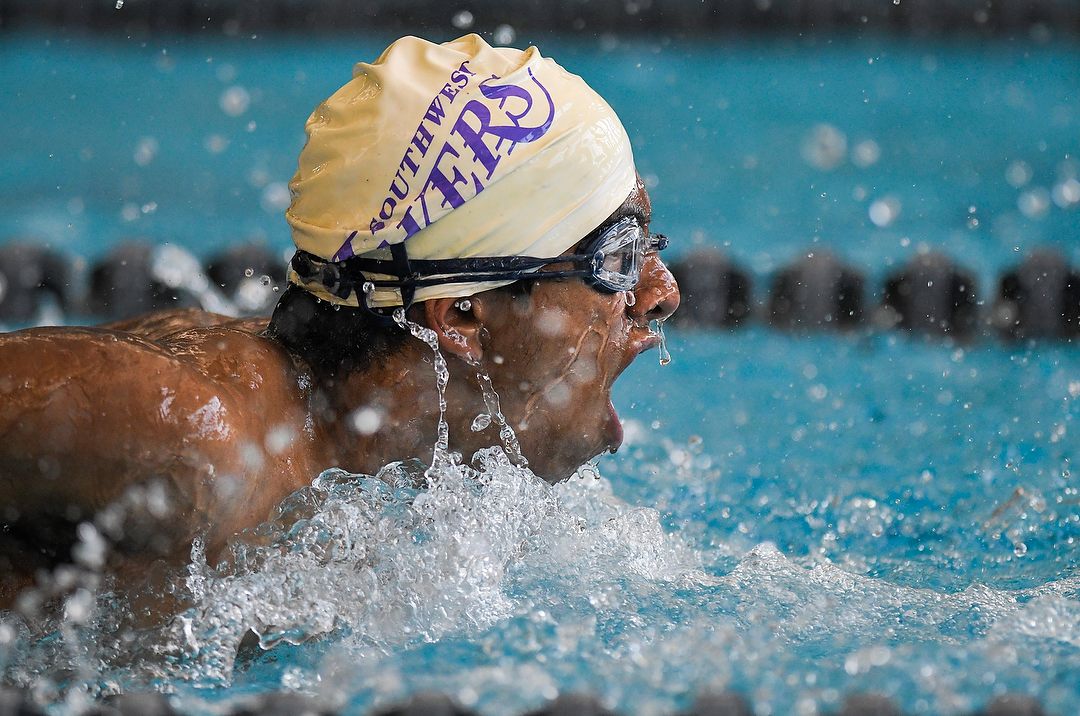
From the side, swimming towards the windows, the light was great. This also shows one reason I brought the D500 aside from very fast autofocus and frame rate. With its DX sensor, my 300mm gives a field of view equivalent to a 450mm lens if I were using my FX (full-frame) cameras. Nikon D500, Aperture Priority, Auto white balance, ISO 1600, 1/3200 at f/2.8 in Matrix metering, -0.7 EV, Nikkor VR 300mm f/2.8G IF-ED lens.
And that’s how I approached all the events that week. Get there early, scope out the area, figure out how I’d work with the light and background(s) and then start shooting.
At the end of each day I’d head to my hotel, download and start sorting photos using Photo Mechanic, the best tool I’ve found for that job. After narrowing the thousand-plus frames from each day down to just hundreds, I’d star-rate the ones needed and bring them into Adobe Lightroom Classic for quick touches of toning and cropping. I shot JPEG and output JPEG, to simplify both my workflow and deliver what they needed. The day after I returned home, I had the finished 577 photos sorted into 25 folders by either individual athlete or sport. After uploading to Dropbox, I simply sent DSUSA the link and was ready to move on to my next project. Obviously, with a job of this size, an efficient workflow is a must.
Want to see what all that work produced? Here are some of the other photos and the stories and tech info behind them:
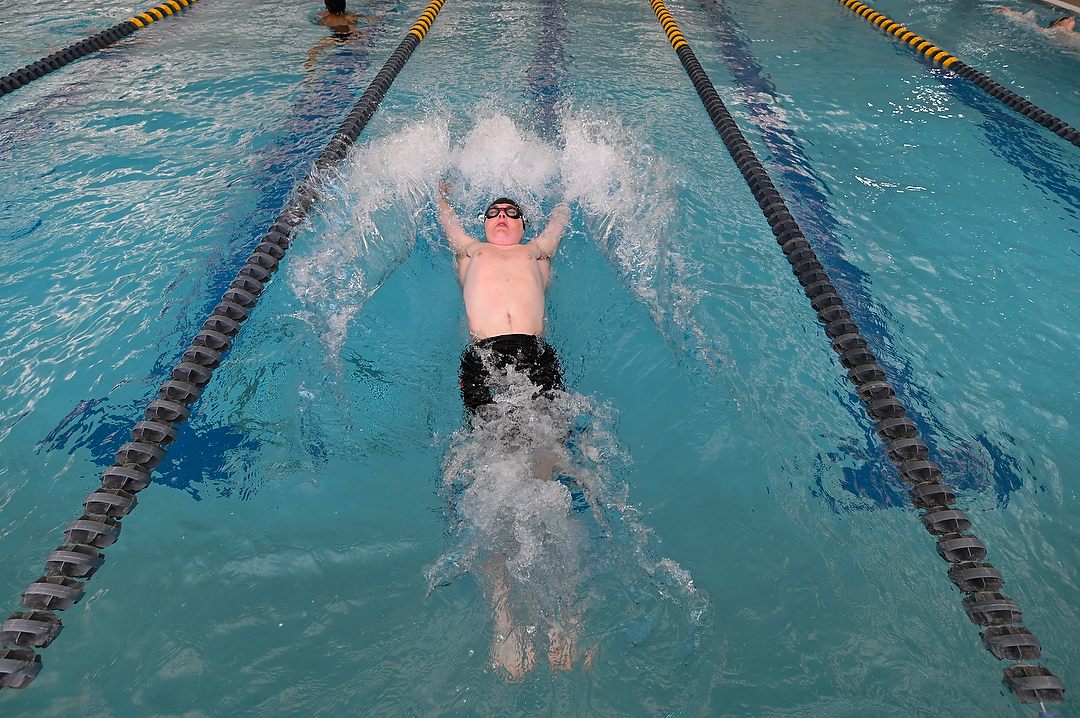
Before the competition begins, I had free rein of the pool and could make this photo of a swimmer practicing his start, something I couldn’t do during the actual races. Nikon Z 6, Aperture Priority, Auto white balance, ISO 2500, 1/500 at f/4.5 in Matrix metering, 0.0 EV, Nikkor AF Zoom 18-35mm f/3.5-4.5G lens at 18mm.
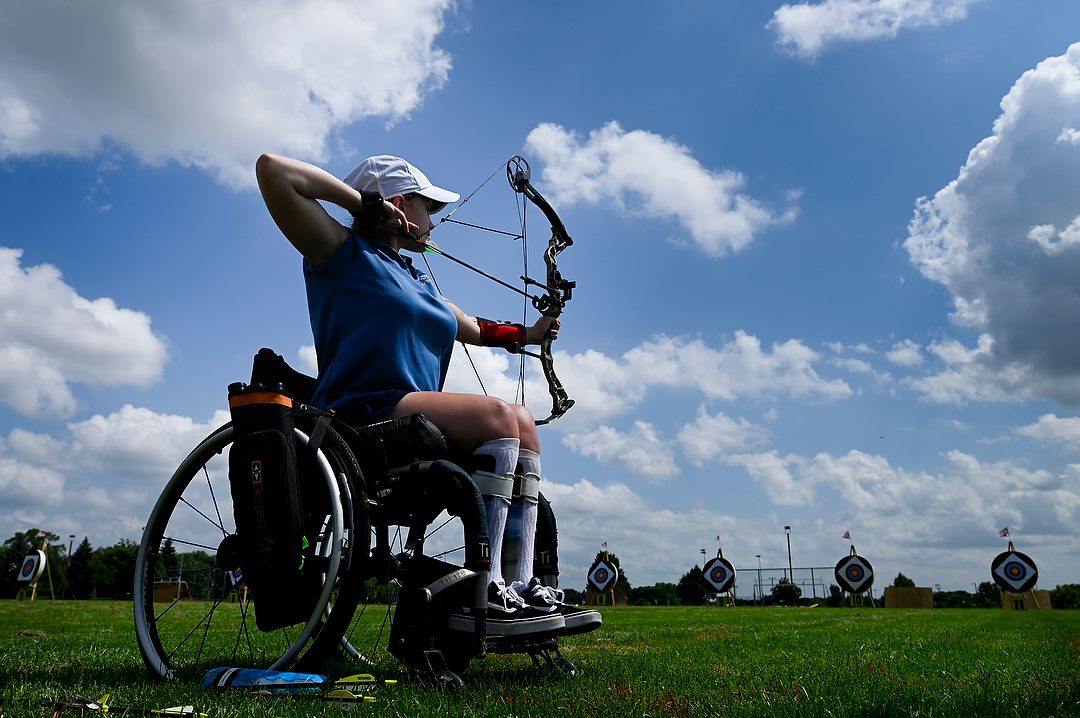
When I’m evaluating what to do with the background in an outdoors shot, if there are puffy white clouds it’s a fair bet I’ll flip out the LCD and do a ground-level photo. Nikon Z 6, Aperture Priority, Sunny white balance, ISO 200, 1/1250 at f/8 in Matrix metering, -0.7 EV, Nikkor AF Zoom 18-35mm f/3.5-4.5G lens at 27mm.
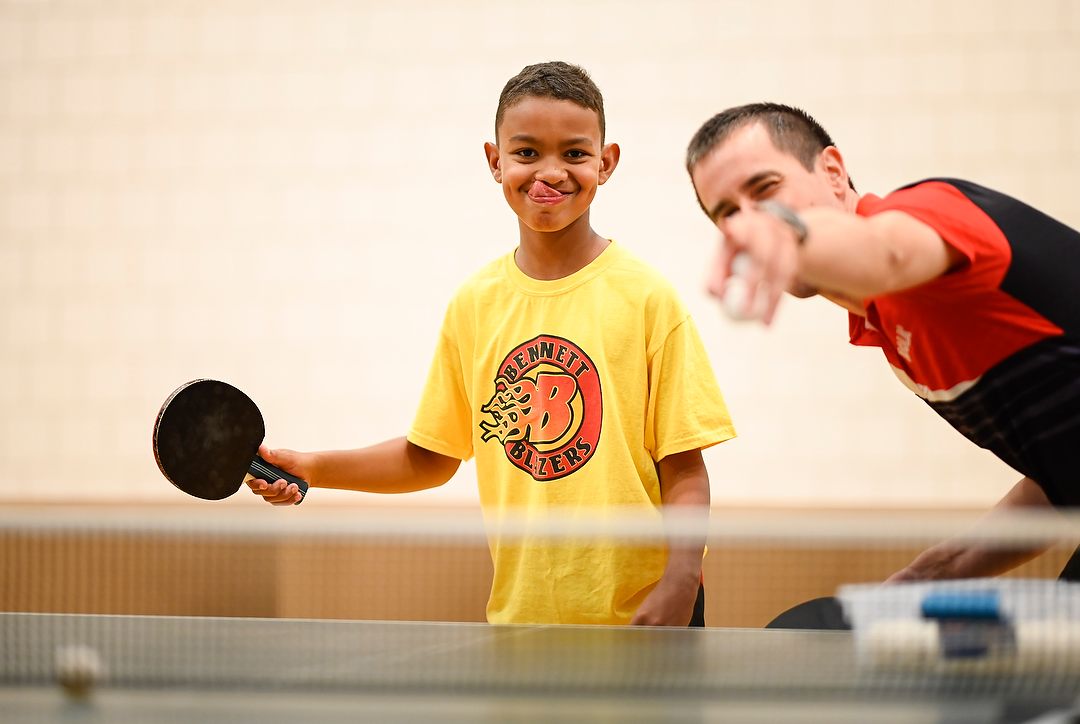
Yes, table tennis is a sport too. The indoor shoots were one of the reasons I brought along the Z6 and 105mm f/1.4 lens. With its relatively large pixels, the Z6 handles high ISO’s easily, and the f/1.4 aperture on that lens makes it easy to work in poor light. Here, the coach is telling the student to try to hit the photographer. Dangerous sport to shoot! Nikon Z 6, Aperture Priority, Auto white balance, ISO 1600, 1/400 at f/1.4 in matrix metering, 0.0 EV, Nikkor AF 105mm f/1.4 lens.
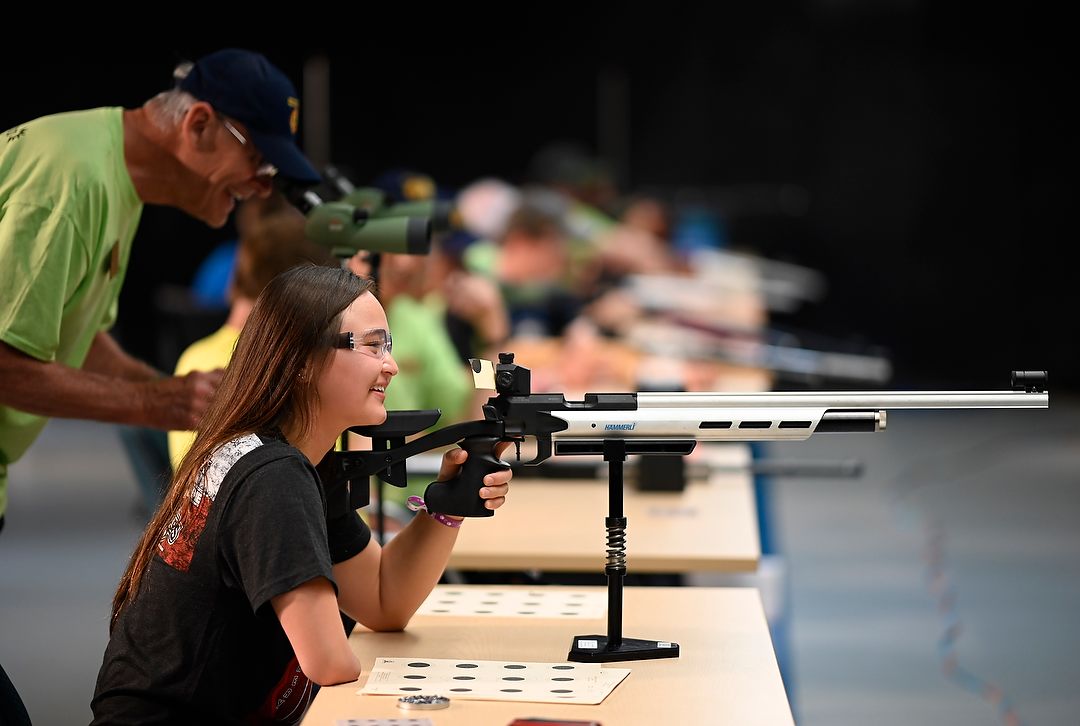
Air rifles were used for the shooting competition, and my ears appreciated that. Again, the Z6 handled the low light well, and the 105mm f/1.4 lens let me make the background less distracting. Nikon Z 6, Aperture Priority, Auto white balance, ISO 1000, 1/250 at f/1.4 in Matrix metering, -0.3 EV, Nikkor AF 105mm f/1.4 lens.
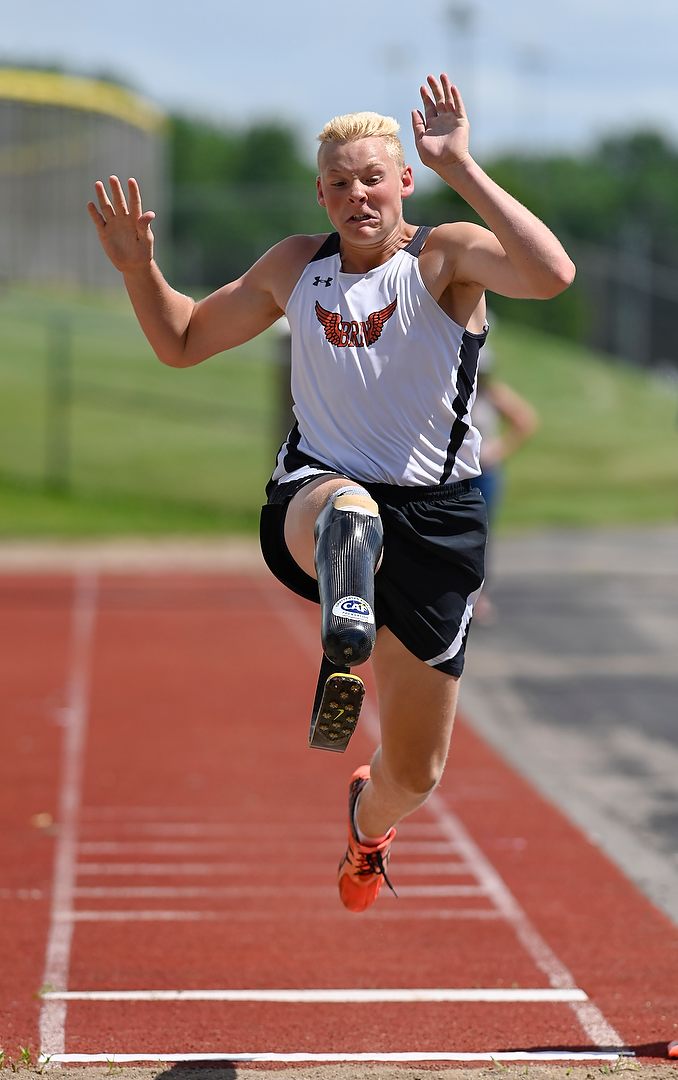
The long jump really let me push the limits of Nikon’s new autofocus Face and Eye Detection firmware update to the Z6. It performed impresively well, especially if there was no one in the background. Nikon Z 6, Aperture Priority, Sunny white balance, ISO 200, 1/3200 at f/4 in Matrix metering, -0.3 EV, Nikkor VR 300mm f/2.8G IF-ED lens.
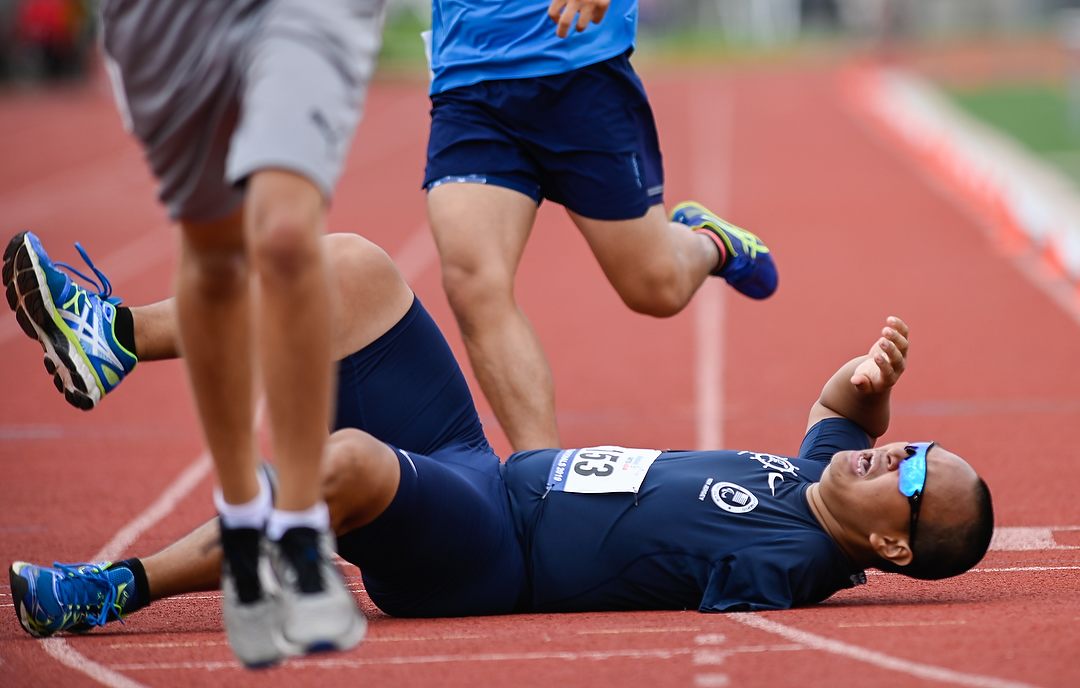
This runner was in the lead on one of the longer races until he got a cramp just before the finish line. Nikon Z 6, Aperture Priority, Sunny white balance, ISO 200, 1/1250 at f/4 in Matrix metering, -0.3 EV, Nikkor VR 300mm f/2.8G IF-ED lens.
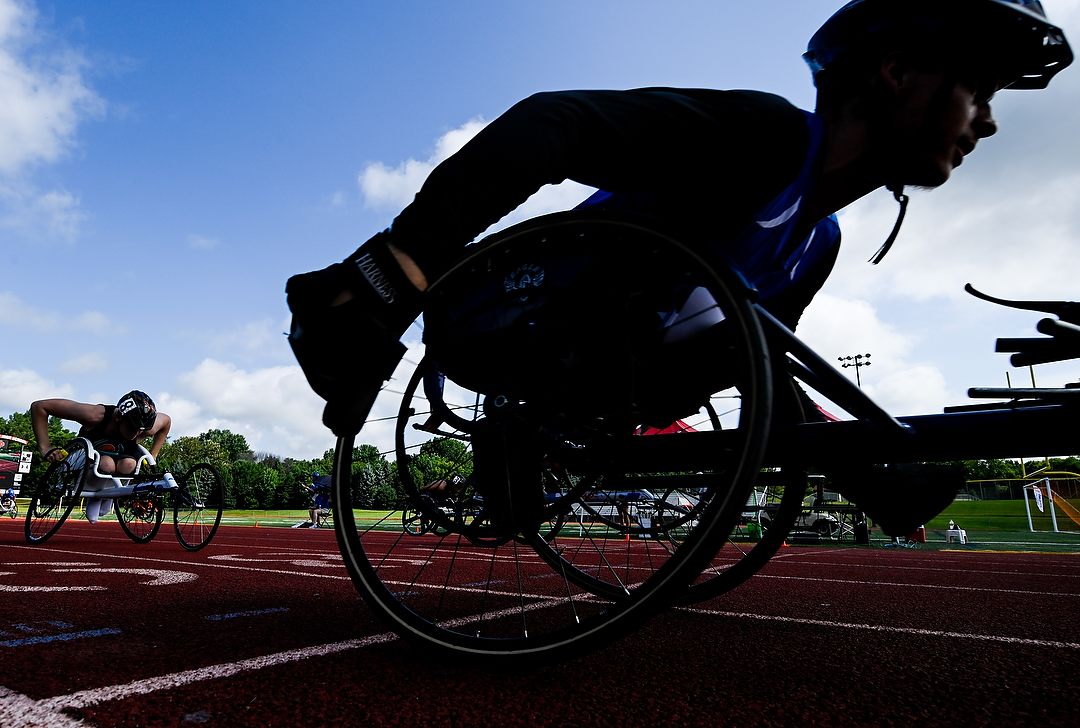
You should always be looking for unusual angles at a new location, and if there’s anything you can do there that you normally couldn’t. That’s what happened here, as I found there was a spot I could kneel down just past the finish line and not be in anyone’s way. Again, I used the flip-out LCD to frame, and took advantage of the Z6’s 12-frames-per-second burst mode as the athletes crossed the finish line. Nikon Z 6, Aperture Priority, Sunny white balance, ISO 400, 1/2000 at f/8 in Matrix metering, -1.0 EV, Nikkor AF Zoom 18-35mm f/3.5-4.5G lens at 18mm.

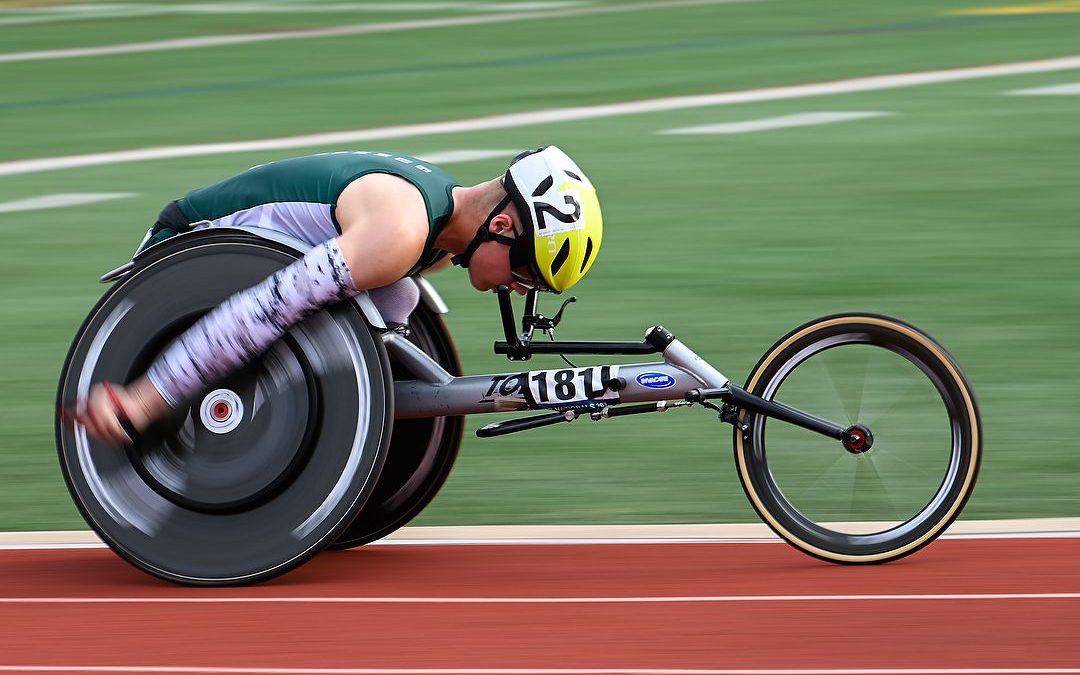
Thanks Reed. Great story and great images as usual! What an inspiring group of athletes–you captured their true grit & determination wonderfully!
Thanks Norm, they’re an impressive bunch of people!
Thank you for your articles. They are very informative and I greatly appreciate them.
I am the Nikon expert at Best Buy store 301 in Downers Grove,IL
Your articles help me with sales
Glad to hear that, Carl. Just ran a Best Buy Portrait workshop in Dallas, and getting ready for the next CES training later this month in San Antonio. Hope the holiday season is a good one for you guys!